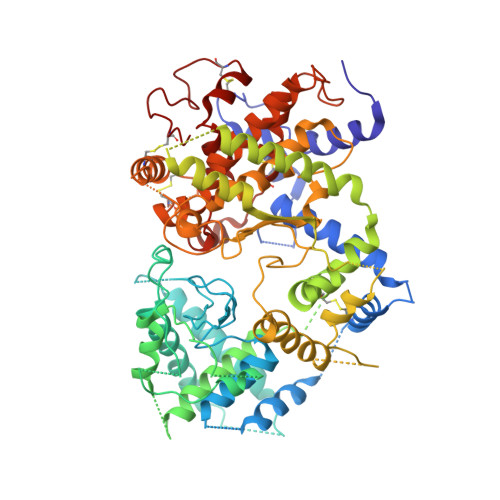Structure of the protective nematode protease complex H-gal-GP and its conservation across roundworm parasites.
Scarff, C.A., Thompson, R.F., Newlands, G.F.J., Jamson, A.H., Kennaway, C., da Silva, V.J., Rabelo, E.M., Song, C.F., Trinick, J., Smith, W.D., Muench, S.P.(2020) PLoS Pathog 16: e1008465-e1008465
- PubMed: 32271834
- DOI: https://doi.org/10.1371/journal.ppat.1008465
- Primary Citation of Related Structures:
6ROW - PubMed Abstract:
Roundworm parasite infections are a major cause of human and livestock disease worldwide and a threat to global food security. Disease control currently relies on anthelmintic drugs to which roundworms are becoming increasingly resistant. An alternative approach is control by vaccination and 'hidden antigens', components of the worm gut not encountered by the infected host, have been exploited to produce Barbervax, the first commercial vaccine for a gut dwelling nematode of any host. Here we present the structure of H-gal-GP, a hidden antigen from Haemonchus contortus, the Barber's Pole worm, and a major component of Barbervax. We demonstrate its novel architecture, subunit composition and topology, flexibility and heterogeneity using cryo-electron microscopy, mass spectrometry, and modelling. Importantly, we demonstrate that complexes with the same architecture are present in other Strongylid roundworm parasites including human hookworm. This suggests a common ancestry and the potential for development of a unified hidden antigen vaccine.
Organizational Affiliation:
School of Molecular and Cellular Biology, Faculty of Biological Sciences & Astbury Centre for Structural Molecular Biology, University of Leeds, Leeds, United Kingdom.
















